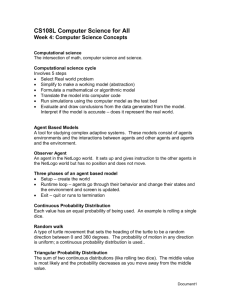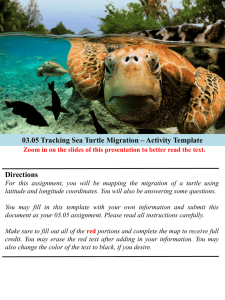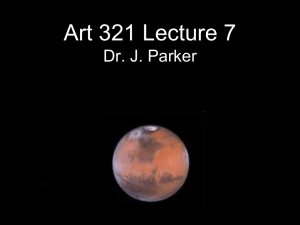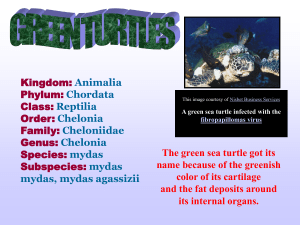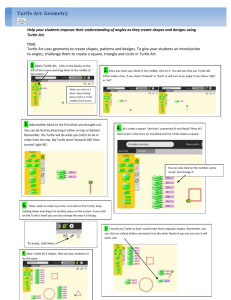Chapter 3 Mathematical Functions, Strings, and Objects
advertisement
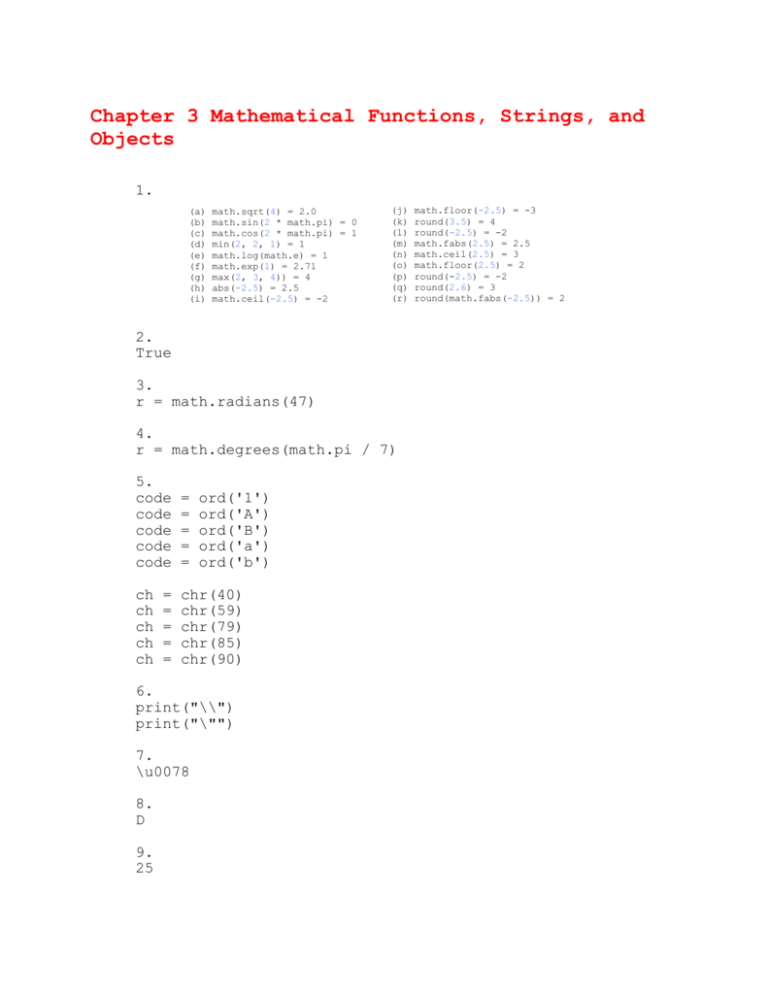
Chapter 3 Mathematical Functions, Strings, and
Objects
1.
(a)
(b)
(c)
(d)
(e)
(f)
(g)
(h)
(i)
math.sqrt(4) = 2.0
math.sin(2 * math.pi) = 0
math.cos(2 * math.pi) = 1
min(2, 2, 1) = 1
math.log(math.e) = 1
math.exp(1) = 2.71
max(2, 3, 4)) = 4
abs(-2.5) = 2.5
math.ceil(-2.5) = -2
(j)
(k)
(l)
(m)
(n)
(o)
(p)
(q)
(r)
2.
True
3.
r = math.radians(47)
4.
r = math.degrees(math.pi / 7)
5.
code
code
code
code
code
=
=
=
=
=
ch
ch
ch
ch
ch
chr(40)
chr(59)
chr(79)
chr(85)
chr(90)
=
=
=
=
=
ord('1')
ord('A')
ord('B')
ord('a')
ord('b')
6.
print("\\")
print("\"")
7.
\u0078
8.
D
9.
25
math.floor(-2.5) = -3
round(3.5) = 4
round(-2.5) = -2
math.fabs(2.5) = 2.5
math.ceil(2.5) = 3
math.floor(2.5) = 2
round(-2.5) = -2
round(2.6) = 3
round(math.fabs(-2.5)) = 2
10.
title = "chapter " + str(1)
11.
5
23
12.
An object is an entity such as a number, a string, a student, a desk, and a computer. Each
object has an id and a type. Objects of the same kind have the same type.
You can perform operations on an object. The operations are defined using functions. The
functions for the objects are called methods in Python
13.
To find the id for an object, use the id(object) function. To find the type for an object, use
the type(object) function.
14.
(b)
15.
s.lower() is "\tgeorgia\n"
s.upper() is "\tGEORGIA\n"
16.
s.strip() is "Good\tMorning"
17.
The return
string.
returned
from
invoking
the
format
function
is
a
18.
The width is automatically increased to accommodate the size of
the actual value.
19.
57.468
12345678.9
57.40
57.40
20.
5.747e+01
1.2e+07
5.74e+01
5.74e+01
21.
5789.468
5789.468
5789.40
5789.40
5789.40
22.
45.747%
45.747%
23.
45
45
2d
2d
24.
Programming is fun
Programming is fun
Programming is fun
25.
turtle.home()
26.
turtle.dot(3, "red")
27.
Draw a square
28.
turtle.speed(number) # Set a number between 1 to 10, the larger, the
faster
29.
turtle.undo()
30.
turtle.color("red")
31.
turtle.begin_fill()
turtle.color("red")
turtle.circle(40, steps = 3) # Draw a triangle
...
turtle.end_fill()
32.
turtle.hide()

